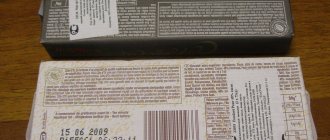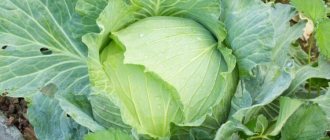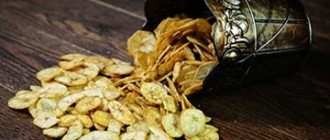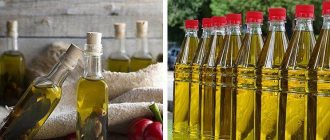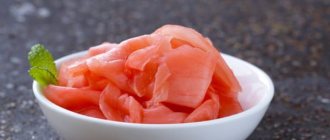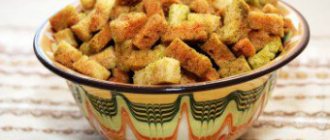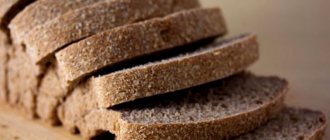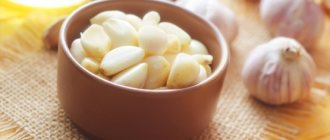Bee honey is a product widely known for its healing properties. It contains at least 300 biologically active compounds, including a variety of vitamins and microelements. In order not to lose this wealth, honey must be stored correctly, otherwise it will cease to be healing and become useless or even dangerous to health.
General storage rules
Bactericidal properties are one of the most important properties of honey. Microbes are not able to reproduce in an environment saturated with chemical compounds and containing antibacterial substances. Therefore, honey is very resistant to spoilage. Potentially, provided that the original composition of honey is preserved, the healing properties and taste of this product remain unchanged for an indefinitely long time. However, under the influence of air, light, temperature and moisture, many beneficial substances in its composition are gradually destroyed, and over time, honey can lose its nutritional value, even while maintaining the same taste.
To slow down such processes, it is necessary to follow basic storage rules.
Temperature
In general, honey is more resistant to cold than to heat. It lasts the longest at temperatures from 0 to +10˚ C. In such conditions, if in addition the air humidity is not exceeded, honey does not change its properties for decades. At a temperature of +10-20˚ the enzyme compounds contained in it are destroyed several times faster, and the shelf life of this product is reduced to 2-3 years. And at a temperature of +20-25˚ it remains useful for no more than a year. If you heat honey to +30 degrees, the breakdown of vitamins in its composition begins; after +60˚ C – its bactericidal properties are lost; and if you raise the temperature to +80˚, in a few minutes it will completely lose its beneficial substances.
Honey tolerates freezing down to -20˚ well, almost without losing its value. However, at sub-zero temperatures it quickly crystallizes, decreases in volume and becomes very hard.
In addition, you should ensure that the temperature is even, without sudden and frequent changes.
Humidity
Honey can absorb moisture and ferment. Therefore, it should be kept in closed containers and in a dry, ventilated area. It is desirable that the humidity level is not lower than 60% and not higher than 80%.
Light
The sun's rays are very dangerous for the preservation of honey. Under light exposure, the bactericidal enzyme and many other compounds are destroyed in it. This product should only be stored in a dark place.
Additional terms
Honey intensively absorbs odors and dust. You should not keep strong-smelling food, building materials, etc. near it.
Shelf life of honey
Honey can be stored for a long time. If you follow all the recommendations, you can enjoy the wonderful taste of honey and amazing aroma for as long as possible. Honey is taken from the honeycomb. After this, it often begins to thicken. This process is natural. It confirms that the product is of natural origin. Beekeepers recommend storing candied honey for a year. Some are sure that if you store honey for a long time, it will become much tastier as it matures. Previously, honey was kept in monasteries for 3 years. Only after this could it be eaten. In the hives of wild bees, honey is stored for many years. At the same time, it remains of high quality. At the same time, the age of the bees that collected it is determined by the honeycombs and the color of the nectar.
Which honey is best stored?
Since honey is processed by bees from the nectar of different plants, the final composition of this product is also different and depends on the raw materials. Accordingly, chemical changes in composition during storage of different varieties have some peculiarities. However, it should be noted that the shelf life of honey in general does not depend on the specific variety. The reaction to changes in temperature, humidity, etc. is almost the same for all types of this product. The differences do not concern healing properties, but only secondary characteristics: color, taste, aroma and rate of crystallization.
Flower honey
The earliest bee honey is collected from May plants. The color at first ranges from light yellow to pale green, transparent. Crystallization begins after 3-4 months and ends after 7-9. During this process, the honey turns very white and becomes thick and grainy. During the first time after collection, honey is odorless. But gradually, over several months, it acquires a special herbaceous-floral aroma. Its taste also becomes richer over time.
Hygroscopicity of honey
When storing purchased honey, you should remember: it has some hygroscopicity, as a result, it easily absorbs various odors and moisture from the outside and retains them. Honey is easily fermented, and this process may be accompanied by the appearance of bubbles. Therefore, it is necessary to carefully close the lid of the jar. The fermentation of sugars and the subsequent appearance of spherical formations is a sign of the beginning of the loss of the taste of honey and its unique quality characteristics.
Even in ancient times, attention was paid to the hygroscopicity of honey. It was noted that honey should never be stored in barrels made from fresh, raw wood.
Due to its hygroscopicity, honey dried out (took up moisture), after which significant cracks appeared in the walls. With the appearance of cracks, the question of the tightness of such barrels was no longer raised - honey simply flowed out of them.
Storage containers
Honey has a very high chemical activity and can react with the substance of the containers where it is kept. Therefore, the container material must be chosen carefully, taking into account its properties. In addition, the container must be tightly closed. Several types of materials can be used to make containers.
Clay
Clay pots were a very popular storage container in earlier centuries. Sometimes they are still used today. This material is lightproof, does not oxidize, has some thermoregulating properties, does not interact with honey and, thanks to all of these features, is ideal for storage. Clay containers must be ceramic; in their unfired form they are hygroscopic.
Glass
The glass jars widely used these days are waterproof and do not affect the composition of the honey. Dishes made of this material, especially dark ones, are best suited for storing it. The disadvantages include its fragility and low capacity. However, when using glass containers at home, these disadvantages are not significant.
Features of containers
Honey, like all natural products, has the ability to absorb moisture and odor. For storage, you need dishes that exclude contact with these factors and prevent oxidation of the product. The high content of active substances requires neutral, chemical-resistant containers. A good option is glassware, preferably dark glass. Wooden, ceramic containers, and food-grade plastic are also suitable. Before storage, the container must be thoroughly washed and dried. It is unacceptable to pour fresh honey into a container containing the remnants of last year’s harvest. The lid should fit tightly, preserving the product in its original state.
Glassware
Glass is the most popular material for making containers. It does not enter into any chemical reaction and does not affect the taste and aroma of the contents. Disadvantages: fragility, light transmission and heavy weight.
Plastic box
Plastic containers are in great demand; they are light, durable and cheap. Plastic must be certified for food storage and have markings confirming that it is safe polypropylene (PP, PP). It would be a good idea to check the container for smell - a strong, chemical smell indicates that it is unsuitable for food.
Vessels made of wood
Previously, linden barrels were the most common container for amber nectar. Other types of wood are not suitable. In an oak container, the healing sweetness will darken; in a pine container, it will deteriorate hopelessly due to the high resin content and the presence of a strong aroma of pine needles. The inside of the wood is coated with a layer of wax to limit the flow of oxygen. Traditionally, honey in Russia is kept in small vessels made of birch bark - tues. Birch bark is not afraid of moisture and mold, and has the property of keeping the inside of the vessel cool.
Honey in a linden barrel
Metal container
Metal containers are least suitable. Aluminum and galvanized utensils, under the influence of active acids contained in honey, release harmful and even toxic compounds. The only acceptable option is enameled metal containers. The coating is resistant to oxidation processes. An important point is that it should not be damaged or chipped.
Honey is a gift from Nature to man, allowing him to maintain and improve health. This bee waste product is a tasty medicine that contains so many essential substances and compounds that their loss in the process of inept preservation will be irreplaceable. A high-quality, seasoned product competes well with drugs used in traditional medicine and forms the basis of many cosmetic preparations.
Where to store honey at home
Professional beekeepers keep pressed honey in containers coated with propolis and sealed with wax, in rooms with a constant temperature of +10˚ C. At home, such measures are not available, but with proper storage it is still possible to extend the shelf life of the product to several years. Let's look at the most popular options.
In the apartment
In a city apartment, honey can be stored for no more than 3 years. Suitable places for this: refrigerator, pantry or closet.
In a refrigerator
A refrigerator with dry freezing provides excellent conditions for preserving honey. If this is not available, you need to at least manually reduce the humidity level by regularly wiping the walls of the refrigerator. It is also necessary to ensure that the product is in an airtight container, otherwise it will absorb unnecessary odors and substances. It is better to place it in the least cold place - on the refrigerator door. However, if desired, honey can be placed in the freezer. In this case, it will lose some beneficial substances, but most of its healing power will remain intact.
On the shelf
At room temperature, honey will spoil faster, but it should last for a year. The storage location should be dark and dry, such as a pantry or closet. Most often, honey is left on the shelf in the cupboard, but this is a rather unfortunate option, because in the kitchen, where food is prepared, the temperature is always higher than in the rooms.
On the balcony
Sometimes honey is placed in a cabinet on the balcony. This place is the least successful, since even in glazed loggias the temperature changes are strong and the air humidity is uncontrollable.
In the cellar
In private homes, honey can be kept in the cellar. The advantages of such storage: absence of light and ideal temperature. Cons: too high humidity. However, this disadvantage can be corrected by placing honey in carefully sealed containers. If the above condition is met, it will retain its properties for many years.
How and where to store it correctly
The place where honey is stored must have special conditions. For example, it does not tolerate sunlight, since it will heat the jar, and this will lead to the destruction of beneficial substances in it, including the enzyme inhibin, which is responsible for the antimicrobial properties of this product. Therefore, the best place to store honey is in a cellar or basement, if the humidity level is suitable.
There is no difference in how to store linden honey and rapeseed honey. But honey with beebread needs to be stored a little differently.
For example, in order to maximize the shelf life of beebread, you need to dilute it with honey in a ratio of 1:2 and send it to a dark, cool room with a humidity level of not 15%. But it’s worth dwelling separately on the temperature and containers where to store honey.
Watch the video about the secret of long-term storage of honey:
How to store honey in honeycombs
How to store honey in combs Many people prefer to buy honey in combs.
Of course, such a product is much healthier, but it requires special storage conditions. Therefore, it is very important today to know how to store honey in honeycombs. First of all, it should be said that natural “packaging” will not allow honey to crystallize for a whole year. But unsuitable humidity can affect it. So, before storing comb honey in a certain place, it is necessary to determine the degree of humidity in it.
If its level exceeds 60%, then the honeycomb may become limp, and if it drops below optimal, moths or mold may appear. The temperature is also important, which should be kept in the range from 3 to 10 degrees above zero.
This is interesting: 12 tips on how to choose the right honey when buying at the market or in a store
For those who do not know in what conditions to store honey, it is also necessary to understand that you cannot put fruits or vegetables near it, especially bananas, and especially harmful chemicals, since it easily absorbs third-party aromas.
Watch a video on how to properly store centrifugal and comb honey:
Is honey stored in the refrigerator?
Many people are concerned about whether honey is stored in the refrigerator.
In principle, honey can be stored in the refrigerator if you follow a few rules. So, this is quite acceptable if the temperature in the refrigerator is not lower than 5 degrees Celsius (as a rule, this temperature regime is observed on the door). You can also store honey in the refrigerator if it has a dry freezing function, otherwise you will have to check the humidity level in it and, if necessary, remove excess moisture from the walls.
Attention!
Before placing honey in the refrigerator, you should make sure that the container in which it is located is sealed so that no foreign odors get inside.
Possible problems
Various chemical processes constantly occur in the structure of honey. Therefore, over time, its appearance and other characteristics inevitably change. Some of the possible changes do not affect the nutritional value of the product, while others indicate its spoilage. The most common of these phenomena include:
Sugaring
Out of ignorance, people quite often mistake the crystallization of honey for spoilage. In fact, this is a completely natural process that does not in any way reduce the nutritional value of the product. The phenomenon of crystallization is due to the fact that honey contains a lot of glucose, which over time collects around particles of pollen and hardens. If sugaring does not occur even after 4 months, this is a clear sign of a fake. This happens when producers either melt the honey or feed the bees sugar syrup. The exception is the acacia variety of honey, which can remain liquid even for up to two years. If crystallization is still not desired, you can store honey in honeycombs or in the form of cream (see above). You can also melt it in a water bath or on a radiator (do not heat it above 40˚), but then it will lose some of its healing properties.
How long can honey be stored at home?
First you need to decide on the honey consistency :
- In honeycombs.
- Thick.
- Liquid.
Fresh honey has a transparent appearance and liquid consistency. It has a specific spicy pungent aroma. It is this product that contains the largest amount of useful substances of organic origin and vitamins that have a beneficial effect on the human body. Over time, even a long-term product loses its beneficial properties , even if all storage conditions are met correctly. It is recommended to store the beekeeping product at home for no more than 12 months.
After removal, the product begins to thicken and crystallize over several weeks. It is by these qualities that one can determine its organicness and naturalness. Thick honey can also be stored for one year if all conditions are met. At room temperatures, shelf life is reduced to six months.
Common mistakes
It is very important to avoid some common mistakes that can dramatically reduce the value of honey.
- Honey should not be left in open places, especially on the windowsill. It must be protected from direct sunlight.
- Honey should not be kept near batteries.
- It is undesirable to mix this product with hot tea and especially use it as part of baked goods; its beneficial properties are lost after heat treatment.
- You can only freeze honey once. Repeated freezing is highly undesirable.
- Different types of honey should be stored separately, each in its own container. Mixing will spoil the taste and aroma of the product.
- The storage container must be treated with boiling water before pouring honey into it. Simply washing will not be enough.
First of all, two conditions are important for the preservation of honey: suitable temperature and correctly selected container. The temperature, ideally, should be positive, but close to zero, and the container should be suitable for the material and be as airtight as possible. The best of the most accessible storage methods is in the refrigerator, in a glass jar tightly closed and wrapped in a bag.
Shelf life of honey according to GOST
The shelf life of natural and timely collected honey is quite long. This is explained by the fact that it contains special bactericidal substances that prevent rapid spoilage of the product (Figure 1).
Note: Nectar in honeycombs is considered most suitable for long-term storage, although under certain conditions it can remain useful for a long time in other containers.
Many people are interested in whether honey, after opening the honeycomb, has a certain shelf life. Indeed, the shelf life of such nectar is significantly reduced, since when the honeycomb is opened, oxygen and harmful substances from the environment enter the product. Accordingly, there is a certain time period during which nectar is considered useful and safe for consumption.
Figure 1. According to GOST, bee products remain fresh throughout the year
The shelf life of bee products according to GOST is one year, although in practice, in properly selected containers and at room temperature, this period is extended to two years. If the temperature and humidity conditions are not met, this period is reduced to only 8 months. GOST also allows for two-year storage of nectar in a hermetically sealed container.
It is worth noting that even after this period has expired, the product will be quite suitable for consumption, although there will be much less useful substances in it due to constant contact with the environment.
Tara
The rules for storing honey require, without fail, the use of the correct container, which allows you to increase the shelf life and not change the condition. In addition, not everyone knows that an unsuitable container can not only violate storage conditions, but also transfer harmful substances from its material to the sweet nectar. Therefore, when choosing a container in which honey will be stored at home, you must be very responsible.
Let's look at all the possible options, analyzing the pros and cons of each of them.
Plastic containers
On store shelves, as well as in market stalls, you can find sweet treats, most often packaged in plastic containers of various sizes. Of course, this is done for the convenience of the manufacturer himself. After all, such containers have easy-to-close lids, low dead weight and transparent walls, which allow the buyer to evaluate the color and other characteristics of the product.
But this absolutely does not mean that you should store honey in plastic containers at home. After all, this material is capable of changing its properties over time and under the influence of specific external conditions, such as exposure to sunlight.
In addition, plastic dishes will definitely release toxic substances that will mix with the components of the sweet treat.
Therefore, experienced beekeepers recommend transferring the purchased product to another container at home.
Glass jars and bottles
As for glass jars, in this case such a container is a more suitable option. Glass itself cannot release any substances that spoil the composition of the product.
The only thing to consider:
- Avoid exposure to direct sunlight. Banks must be kept in the dark.
- Choose tight-fitting lids. Since the substance obtained from bees is highly hygroscopic and absorbs all odors from the environment. It is also capable of absorbing excess moisture, which ultimately does not have the most favorable effect on quality.
Wooden barrels and dishes
Any wooden containers, regardless of their size, are a fairly suitable option for storing such delicacies. The fact is that the composition acquires a peculiar taste and special aroma. In addition, it is the wooden storage container that allows you to retain all the valuable qualities for a longer period of time.
But here, too, there are subtleties and points that need to be paid close attention to:
- Choose wooden barrels or other utensils, including using bowls only from species such as oak, birch, beech, and linden. They do not emit a resinous substance that can spoil the composition.
- But coniferous tree species, such as pine, spruce, cedar, as well as species that emit a pronounced odor, for example, juniper, are not suitable for these purposes. They will spoil the taste and change the biochemical composition.
Clay vessels
Since ancient times, clay containers were considered the most suitable for preserving all the valuable qualities of nectar obtained from bees. This is due to the following points:
- Such dishes do not allow sunlight to pass through.
- Not exposed to intense temperature changes under the influence of the external environment.
- Previously, everything was filled with a layer of wax on top, which tightly sealed the composition, preventing air from reaching the internal contents.
- I needed to put these pots in a specific place for storage.
- All this contributed to the long shelf life and safety of everything valuable.
